Water snakes, true to their name, live in or around the water. They are members of the Nerodia genus. They are non-venomous. Their colors and markings vary, but they are mostly grey, brown, olive green, or reddish with dark patterns on their backs.
These snakes can be very large, with some growing as long as three to five feet. They are very common in states such as Mississippi, Arkansas, Alabama, North Carolina, South Carolina, Georgia, and Florida. However, they can be found in the Midwest as well, including states like Kentucky.
Keep reading to learn more about the seven water snakes in Kentucky!
1. Northern Water Snake
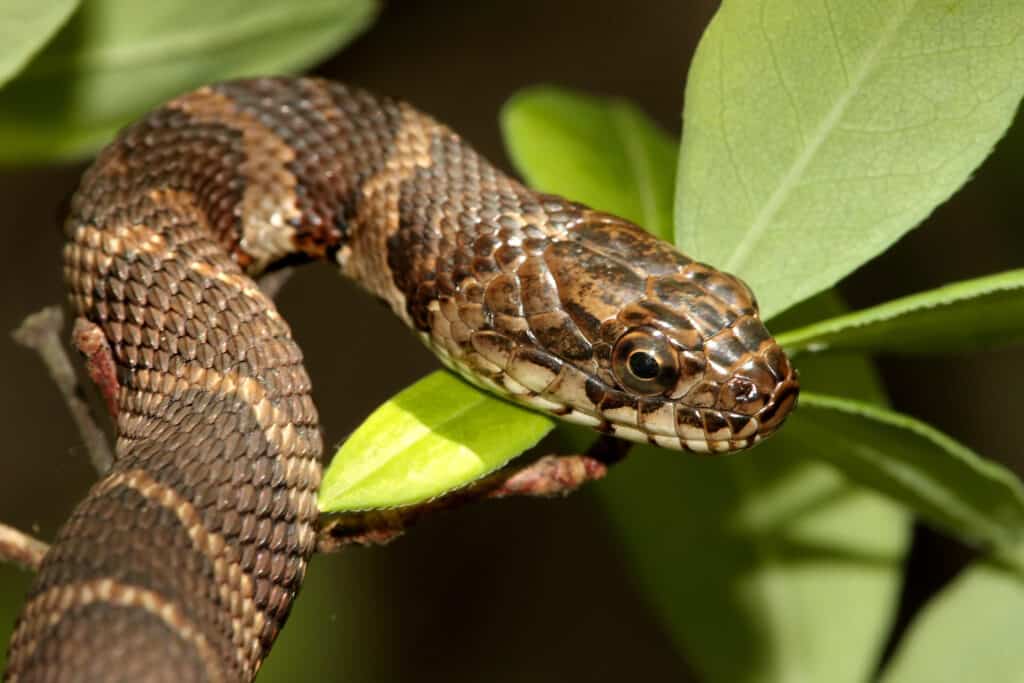
©Steve Byland/Shutterstock.com
The northern water snake is very common in Kentucky. In fact, it is one of two subspecies of the common water snake. Because they are very adaptable and able to handle a variety of habitats, they are common all over Kentucky. Typically, they live around swamps, lakes, and rivers.
They are very good at camouflaging themselves, with their grey or brown coloring and darker (black or reddish-brown) patterns on their bodies. The large adults get darker as they grow older, and at some point, they will often appear fully dark brown or black.
These snakes are usually three to four feet long. They are not venomous, but they do typically prey on amphibians and fish. They catch these animals using their ability to coil around them and their sharp teeth.
Common water snakes typically prefer either standing or slow-moving water, such as lakes and slow-moving rivers. When people see them, most of the time they are basking on logs or rocks around the water. These snakes will generally hide in the water if they feel threatened. They are not sociable around humans.
However, if someone captures or grabs a common water snake, they will use the glands close to their tail to release a foul musk and then strike at the threat. Even though they’re not venomous, their bite can be very painful.
There is an anticoagulant in the saliva of the common water snake that causes bites to bleed profusely. This is an important mechanism of defense against predators, such as birds, opossums, foxes, snapping turtles, raccoons, and larger snakes.
2. Midland Water Snake
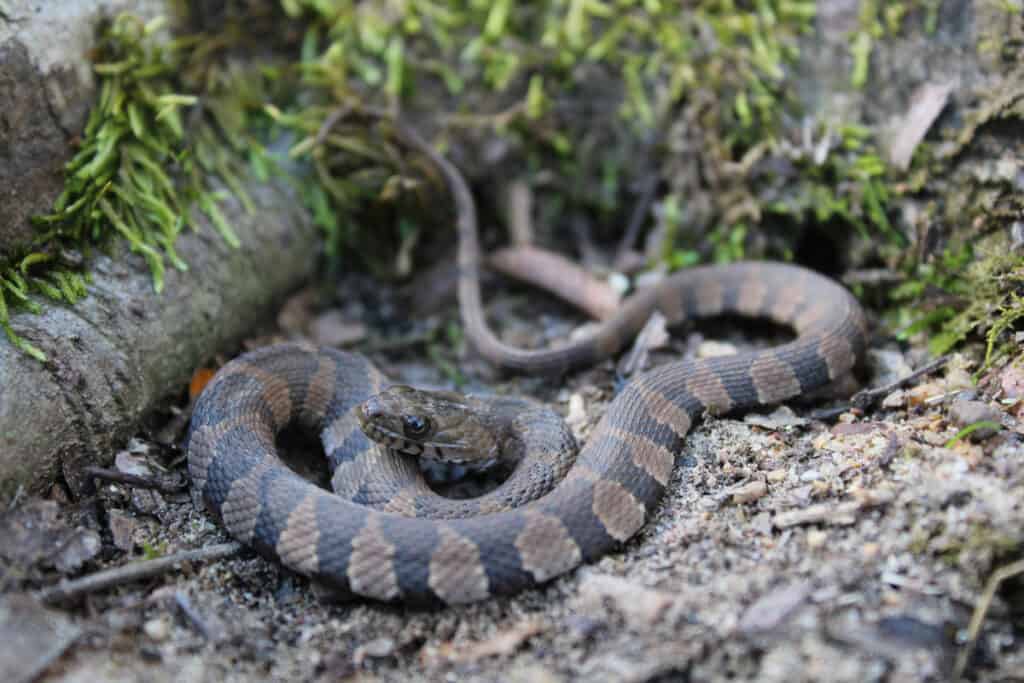
The midland water snake can be found in a small section of the Florida panhandle
©Tucker Heptinstall/Shutterstock.com
These are another subspecies of the common water snake, and they also live semi-aquatic lives. Just like the northern water snake, they are non-venomous, feed on similar prey, and exhibit similar behaviors.
The midland water snake is usually light grey in color, although some individual snakes have a reddish tone. They have darker patterns throughout the length of their bodies.
Typically, you will see dark cross bands close to their heads, and a transition to dark squarish blotches as you move down the body of the snake.
3. Broad-banded Water Snake
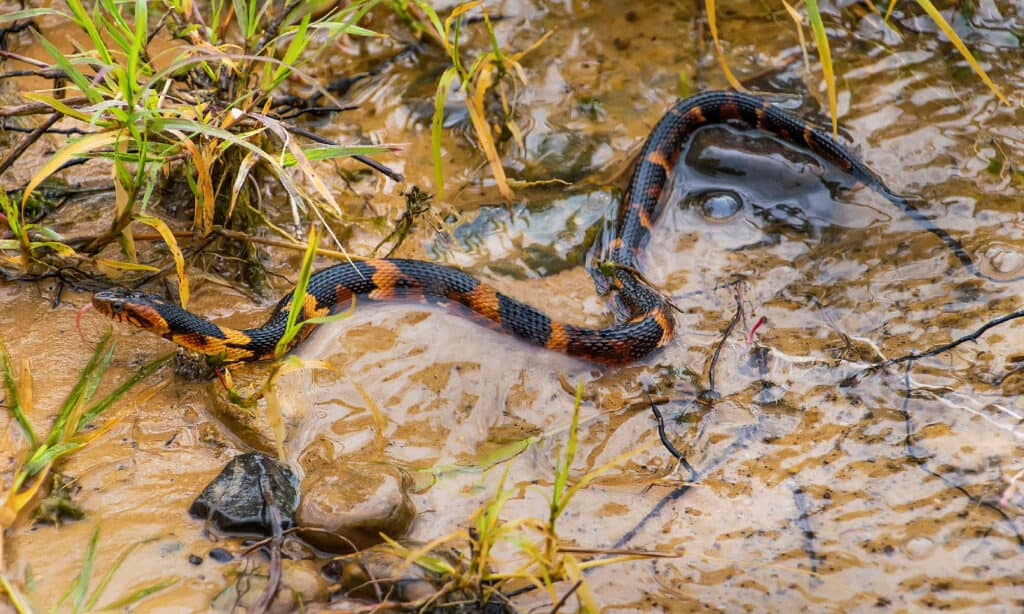
©iStock.com/williamhc
These snakes also have semi-aquatic lifestyles. They are typically grey, olive green, black, or brown in color, with dark blotches or bands along the lengths of their bodies. Broad-banded water snakes are typically two to three feet long as adults.
They have strong coils and sharp teeth, which allows them to catch the amphibians and fish on which they prey. Like many water snakes, they are able to easily adapt to different aquatic habitats, making them common all over Kentucky.
4. Yellowbelly Water Snake
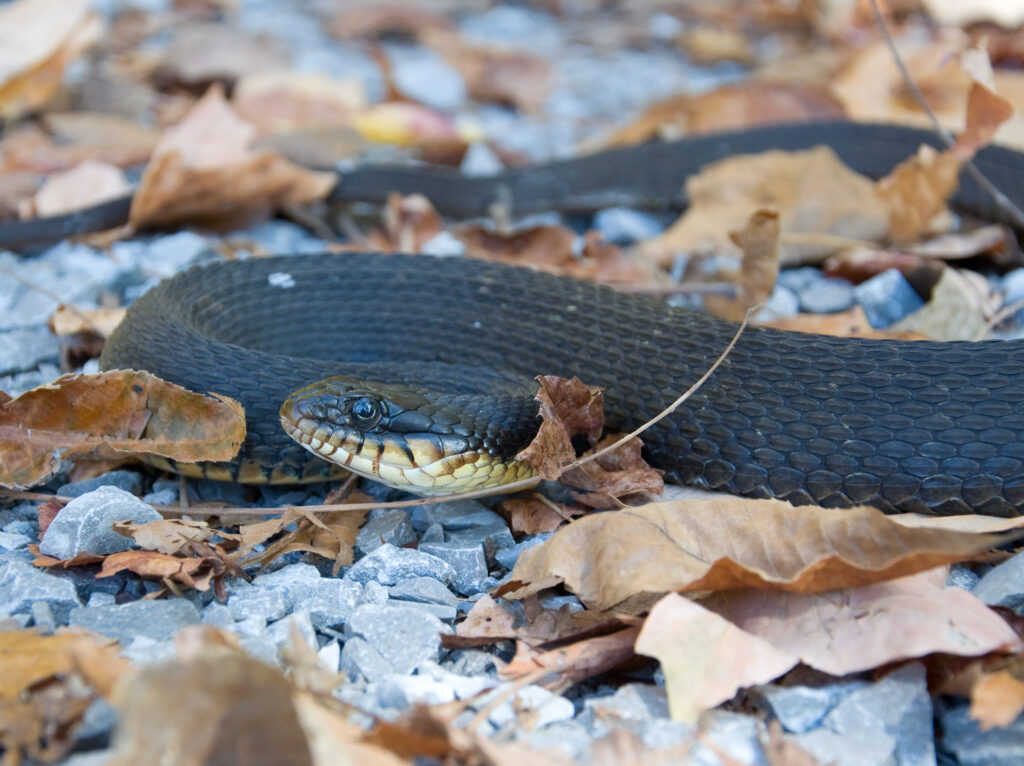
Yellow bellied water snake, Nerodia erythrogaster flavigaster, amidst some fallen leaves in the Shawnee National Forest.
©Gerald A. DeBoer/Shutterstock.com
There are two subspecies of the plain-bellied water snake in Kentucky, and this is one of them. These snakes are unique in appearance, with a bright yellow belly that gives them their name and grey, olive green, black, or dark brown coloring on their backs. However, this only appears during adulthood. Juvenile yellowbelly water snakes do not have this coloration on their bellies.
The adult plain-bellied water snake is approximately three feet long (usually between 24 and 40 inches). These snakes live near diverse bodies of water, including rivers, lakes, wetlands, and floodplains. These snakes spend a lot of time on land, in comparison to other Kentucky water snakes. They often retreat into the woodlands during times of heat and humidity.
Unlike other water snakes, plain-bellied water snakes will attack prey by ambush, instead of actively chasing prey. They feed on crayfish and fish, in addition to amphibians.
Female plain-bellied snakes give birth to live young in August and September. They can either reproduce with male snakes or via parthenogenesis (asexual reproduction). Like the common water snake, these snakes release a musk and can bite when attacked. Predators include hawks, egrets, largemouth bass, and other snakes.
5. Copperbelly Water Snake
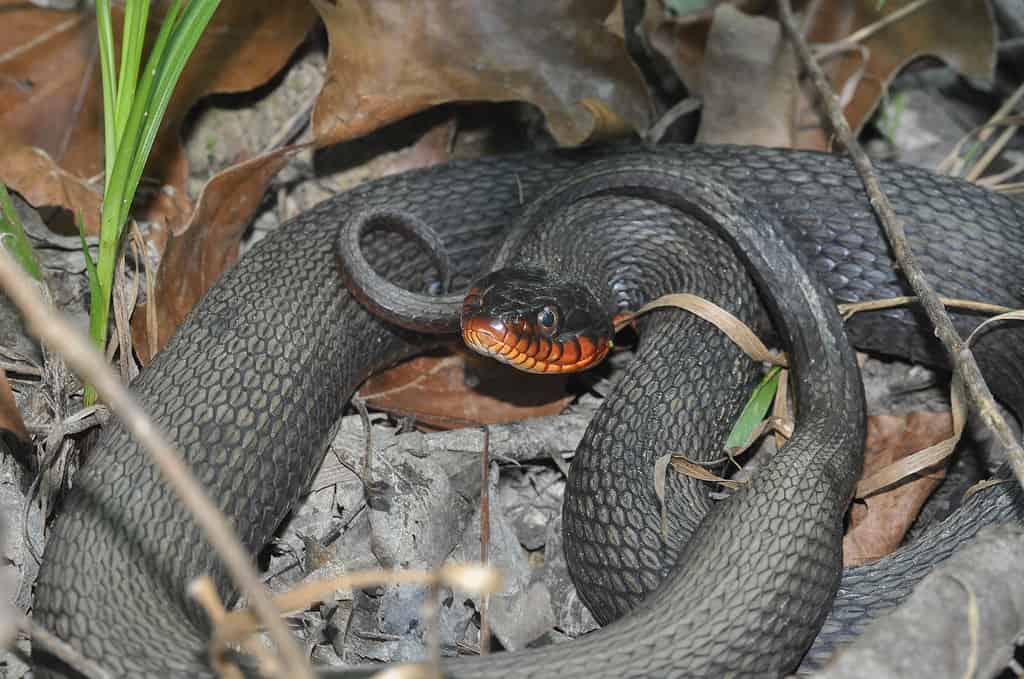
©Mike Wilhelm/Shutterstock.com
The copperbelly water snake is the other of the two subspecies of the plain bellied water snake in Kentucky. They are very similar to their yellowbelly counterparts, except they have copper-colored bellies instead of yellow-colored ones.
6. Mississippi Green Water Snake

Like most water snakes, they eat amphibians and fish and capture their prey using their teeth and coils.
©Jason Patrick Ross/Shutterstock.com
True to its name, the Mississippi green water snake mostly resides in the wetlands close to the Mississippi River. These are one of the few green snakes in the United States. Their bodies are bright green.
These snakes usually reach a length of 2.5 to 3 feet in adulthood. Like most water snakes, they eat amphibians and fish and capture their prey using their teeth and coils.
7. Diamondback Water Snake
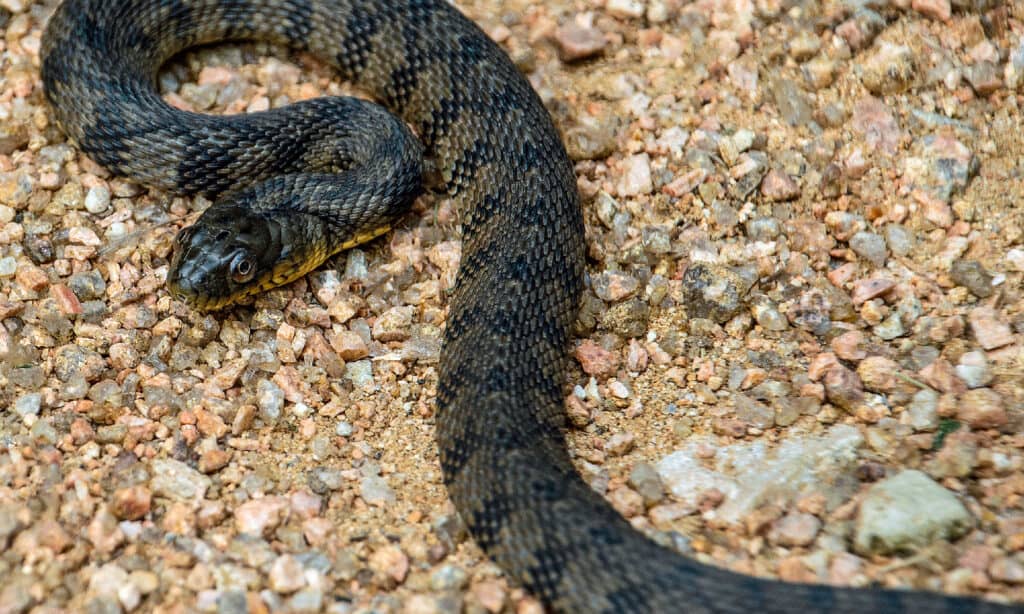
Diamondback water snakes live in western Kentucky in freshwater habitats.
©iStock.com/williamhc
The diamondback water snake is named for its unique appearance. This snake is black, dark brown, olive green, or yellowish in color, and it has diamond-shaped markings all along its back, hence the name. The yellow belly of this thick-bodied snake has dark half-moon shapes along its length.
These snakes are about three feet long in adulthood on average (can be 30 to 48 inches long). They are opportunistic feeders, and unlike other water snakes, they will eat not only amphibians and fish but also small mammals. Once they acquire their prey, they take it to shore and wait for it to die. This makes them unique among water snakes, as others eat prey alive.
Diamondback water snakes live in western Kentucky in freshwater habitats. They like slow-moving waters, ideally with overhanging vegetation.
The photo featured at the top of this post is © Ryan M. Bolton/Shutterstock.com
Discover the "Monster" Snake 5X Bigger than an Anaconda
Every day A-Z Animals sends out some of the most incredible facts in the world from our free newsletter. Want to discover the 10 most beautiful snakes in the world, a "snake island" where you're never more than 3 feet from danger, or a "monster" snake 5X larger than an anaconda? Then sign up right now and you'll start receiving our daily newsletter absolutely free.
Thank you for reading! Have some feedback for us? Contact the AZ Animals editorial team.






